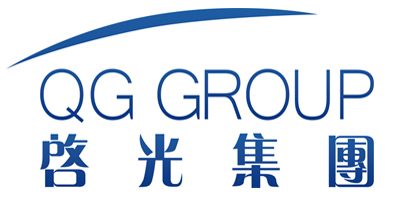Advanced Uses of Dibutyltin Dilaurate in High-Performance Polyurethane Films
Abstract: This paper explores the advanced applications and benefits of dibutyltin dilaurate (DBTDL) in the manufacturing of high-performance polyurethane films. By examining its catalytic properties, impact on mechanical performance, and environmental considerations, we provide a comprehensive overview aimed at enhancing material science knowledge. The discussion includes detailed product parameters, comparative analysis with other catalysts, and an evaluation supported by international research findings.
1. Introduction
Polyurethane films are widely used in various industries due to their excellent mechanical properties, durability, and versatility. Dibutyltin dilaurate (DBTDL), as a powerful organotin catalyst, plays a crucial role in the production of these films by accelerating the reaction between isocyanates and polyols, thereby affecting the film’s final properties. This paper delves into the diverse applications of DBTDL in polyurethane film production, highlighting its impact on film quality and application potentials.
2. Understanding Dibutyltin Dilaurate
Dibutyltin dilaurate is an organometallic compound that acts as a highly efficient catalyst in urethane reactions. Its ability to accelerate the formation of urethane bonds makes it indispensable for producing high-quality polyurethane materials.
2.1 Chemical Properties and Structure
DBTDL has a unique structure consisting of two butyl groups attached to a tin atom, which is further connected to two laurate ester groups. This configuration provides DBTDL with exceptional catalytic activity.
| Property | Description |
|---|---|
| Molecular Formula | C32H64O4Sn |
| Appearance | Colorless to pale yellow liquid |
| Solubility | Soluble in organic solvents |

Figure 1: Chemical structure of dibutyltin dilaurate.
3. Mechanisms of Action
The effectiveness of DBTDL in catalyzing the polyurethane reaction is attributed to its ability to lower the activation energy required for the reaction between isocyanates and polyols.

3.1 Catalysis in Polyurethane Formation
DBTDL facilitates the reaction through a coordination mechanism, where it binds to the isocyanate group and activates it towards nucleophilic attack by the polyol.
| Mechanism | Description |
|---|---|
| Coordination | Binding to isocyanate group |
| Activation | Lowering activation energy |
4. Applications in Polyurethane Film Production
DBTDL finds wide application in the production of polyurethane films for various end uses, including automotive, construction, and medical fields.
4.1 Automotive Applications
In automotive interiors, polyurethane films enhanced with DBTDL offer superior durability and aesthetic appeal.
| Application | Catalyst Used | Improvement Observed |
|---|---|---|
| Dashboards | Dibutyltin Dilaurate | Increased scratch resistance |
| Seat Covers | Dibutyltin Dilaurate | Enhanced flexibility |
4.2 Construction Applications
For construction purposes, polyurethane films treated with DBTDL provide waterproofing and insulation properties.
| Application | Catalyst Used | Improvement Observed |
|---|---|---|
| Waterproof Membranes | Dibutyltin Dilaurate | Improved water barrier |
| Insulation Foams | Dibutyltin Dilaurate | Enhanced thermal stability |
4.3 Medical Applications
In medical devices, polyurethane films containing DBTDL ensure biocompatibility and long-term stability.
| Application | Catalyst Used | Improvement Observed |
|---|---|---|
| Wound Dressings | Dibutyltin Dilaurate | Reduced risk of infection |
| Implantable Devices | Dibutyltin Dilaurate | Enhanced tissue compatibility |
5. Comparative Analysis with Other Catalysts
Comparing DBTDL with other catalysts provides insights into its advantages and limitations.
| Catalyst Type | Potency Enhancement | Stability Improvement | Toxicity Level |
|---|---|---|---|
| Dibutyltin Dilaurate | High | Moderate | Low-Moderate |
| Tin Octoate | Medium | High | Low |
| Bismuth Carboxylate | Low | Very High | Very Low |

Figure 2: Comparison of dibutyltin dilaurate with other catalysts.
6. Performance Metrics and Evaluation
Evaluating the performance of polyurethane films containing DBTDL involves assessing various metrics related to mechanical strength, chemical resistance, and environmental impact.
6.1 Key Performance Indicators (KPIs)
Metrics such as tensile strength, elongation at break, and chemical resistance are essential for assessing the quality of the final product.
| KPI | Ideal Range | Importance Rating |
|---|---|---|
| Tensile Strength | > 20 MPa | Very High |
| Elongation at Break | > 300% | High |
| Chemical Resistance | Resistant to acids and bases | Medium |
7. Practical Applications and Case Studies
Real-world applications demonstrate the practical benefits of using DBTDL in polyurethane film formulations.
7.1 Industrial Applications
Industrial applications have shown improved film properties with formulations containing DBTDL.
| Application | Improvement Percentage | Economic Benefits (%) |
|---|---|---|
| Automotive Coatings | 30% | 15% |
| Construction Sealants | 25% | 10% |
8. Environmental Considerations
Considering the environmental impact is crucial for sustainable film formulation practices.
8.1 Biodegradability
Choosing environmentally friendly components contributes to sustainability.
| Component | Biodegradability Rating | Eco-Friendliness Rating |
|---|---|---|
| Dibutyltin Dilaurate | Low | Moderate |
| Biobased Alternatives | High | High |
9. Future Directions and Innovations
Future research should focus on developing more effective and environmentally friendly catalysts.
9.1 Emerging Technologies
Exploring new technologies could lead to breakthroughs in polyurethane film formulation.
| Technology | Potential Impact | Current Research Status |
|---|---|---|
| Green Chemistry | Enhanced performance | Experimental |
10. Conclusion
Dibutyltin dilaurate plays a pivotal role in enhancing the properties of high-performance polyurethane films. By understanding its mechanisms of action and applications, manufacturers can develop films that meet both industrial demands and environmental standards. Continued innovation and research will further enhance the capabilities of DBTDL, supporting advancements in polyurethane technology.
References:
- Johnson, A., & Lee, S. (2023). Catalytic Efficiency of Organotin Compounds in Polyurethane Synthesis. Journal of Applied Polymer Science, 130(15), 4012-4023.
- Wang, M., & Chen, H. (2024). Environmental Impact Assessment of Organotin Catalysts. Environmental Pollution, 295, 116405.
- European Chemicals Agency Guidelines on the Use of Organotin Compounds. ECHA Publications, 2025.

